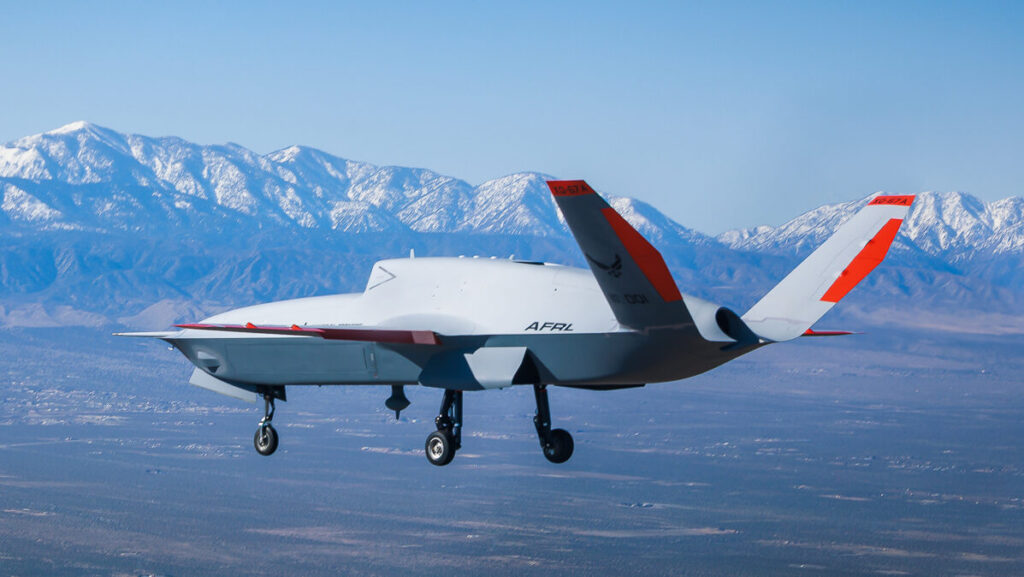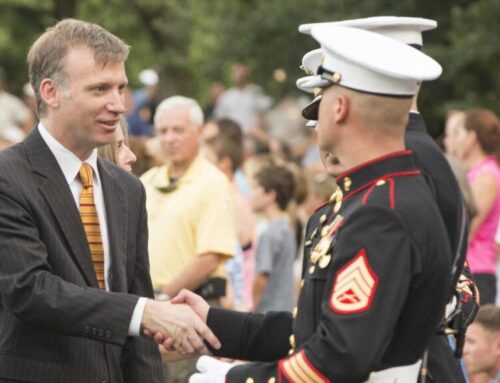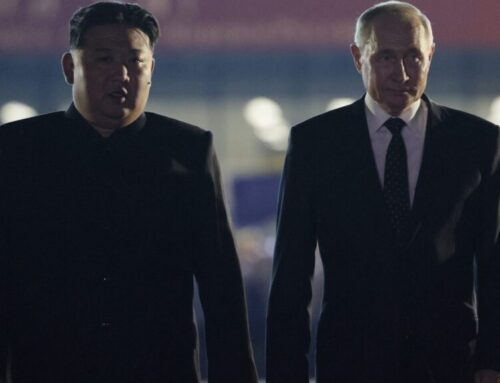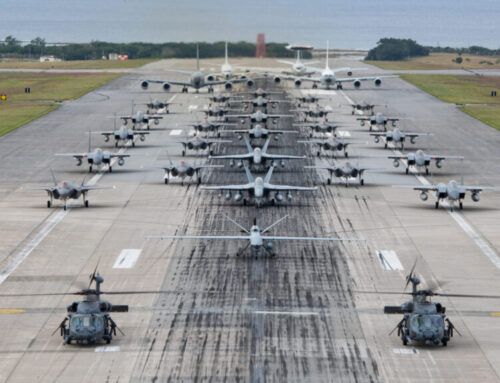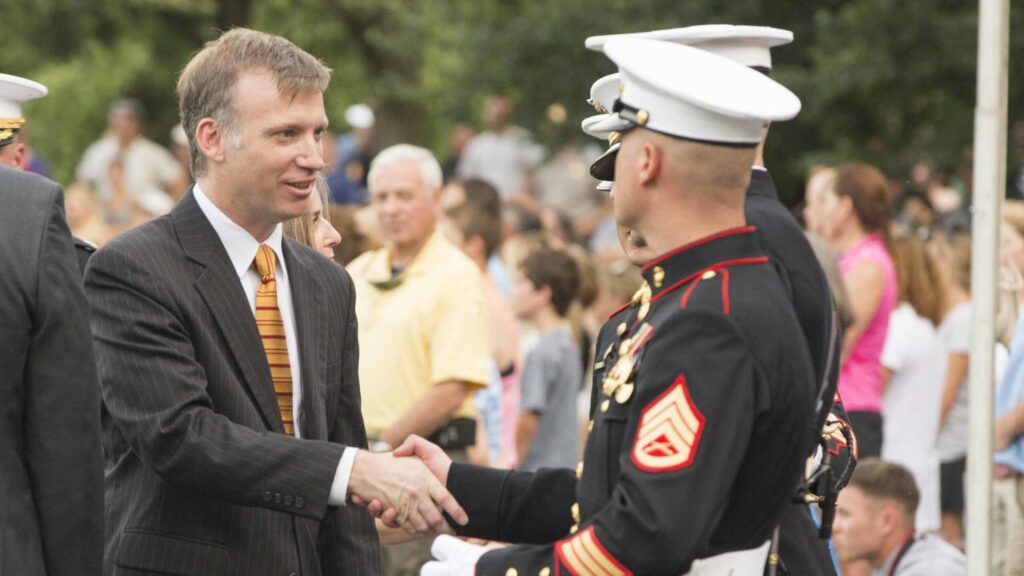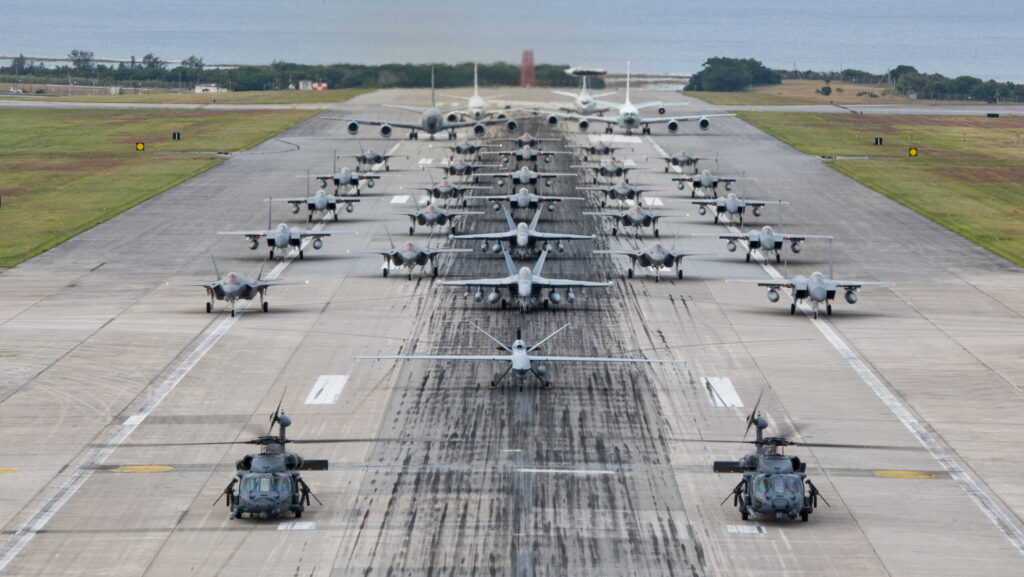The Air Force Research Laboratory’s XQ-67A Off Board Sensing Station, designed and built by General Atomics, in its first flight on Feb. 28 from Gray Butte Field Airport, Palmdale, California. General Atomics is pitching its Gambit drone design, which the XQ-67A is based on, for the Air Force’s CCA program. (Air Force photo)
WASHINGTON — The Air Force is seeking to funnel additional dollars into its drone wingmen effort in fiscal year 2024, asking lawmakers for special permission to shift an additional $150 million into the effort on top of the $392 million that Capitol Hill previously appropriated, according to documents reviewed by Breaking Defense.
Additional dollars sought by the request — amounting to a cost increase of nearly 40 percent for the Air Force’s Collaborative Combat Aircraft (CCA) program in FY24 — “will be utilized to conduct analyses, identify technology candidates, perform concept refinement studies, and design/build/test production representative test articles,” the request reads. “The increase is primarily due to the recently approved acquisition strategy, refined attributes for the production prototype and revised costs following receipt of proposal and contract award.”
The request, known as a reprogramming, must be signed off by the chairs and ranking members of the four congressional defense committees. Breaking Defense reviewed the request, which was bundled with others submitted by the Pentagon and recently sent to Capitol Hill. Inside Defense first reported the reprogramming, which is part of a request for a broader reshuffling concerning $3.3 billion in funds, according to the outlet. It’s not immediately clear exactly where the additional dollars would be shifted from.
Touted by the service as facilitating an “affordable mass” of drones to offset challenges posed by the rapid divestment of aging fighters, the CCA effort has largely been supported by lawmakers. But some key legislators have also sought early on to set cost targets, a move which Air Force Secretary Frank Kendall previously said the service is “very opposed” to.
In a statement to Breaking Defense, Air Force spokesperson Ann Stefanek characterized the need for additional funds as a “refinement” of the program’s costs, not a cost growth.
“The original estimates for FY24 were developed two years ago. Given the refinement of the program in the intervening years, the Air Force determined additional funds were required in FY24. There has been no actual cost growth, just a refinement of the costs based on what we know about the program now,” she said.
The Air Force in April picked startup Anduril Industries and legacy dronemaker General Atomics Aeronautical Systems (GA-ASI) to advance in the service’s first round of CCA development, tasking the companies to build and test prototypes. Kendall previously floated the “possibility” of carrying more than one vendor into production for the CCA program’s first “increment” that Anduril and GA-ASI were selected for, though it’s unclear how current cost growth might impact that prospect. A second CCA increment is planned for FY25, which would provide an on-ramp for losing bidders from the previous round and new entrants.
Anduril’s Fury drone, which the company is pitching for the CCA program. (Anduril photo)
Anduril declined to comment on the cost growth for the program and directed questions to the Air Force.
C. Mark Brinkley, a spokesman for GA-ASI, said in a statement that “[t]he challenge in moving to autonomous collaborative platforms has always been finding the right balance between cost, survivability and mission system capability. General Atomics has been working on these issues for nearly a decade, across two different jet UCAV [Unmanned Combat Aerial Vehicle] platforms flying today, and across multiple autonomy projects.
“So, this is a new thing, but it’s not specifically new to us,” he continued. “We think the Air Force has found that right balance, and we know we can hit the targets that have been outlined for the program, including cost.”


